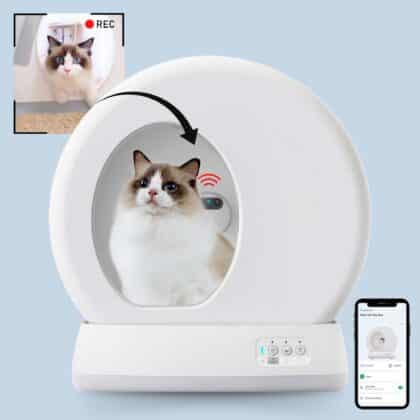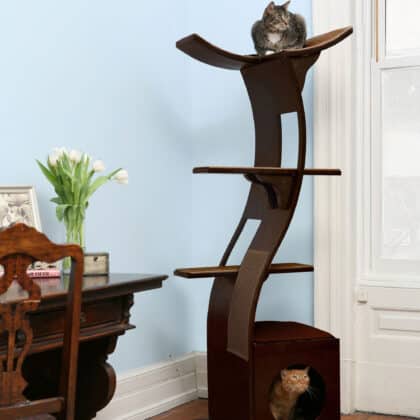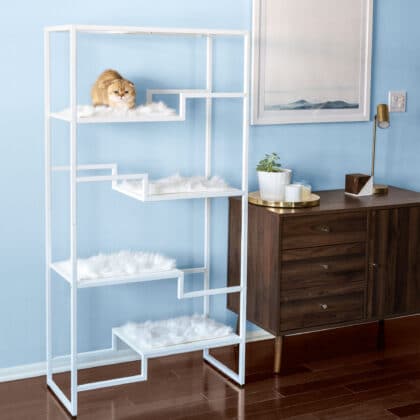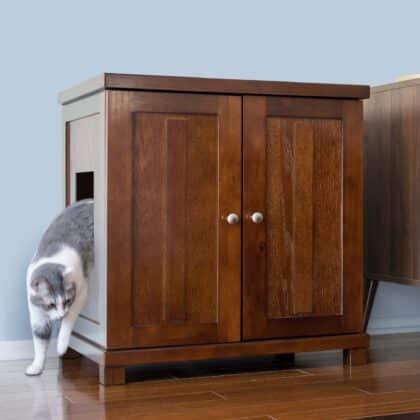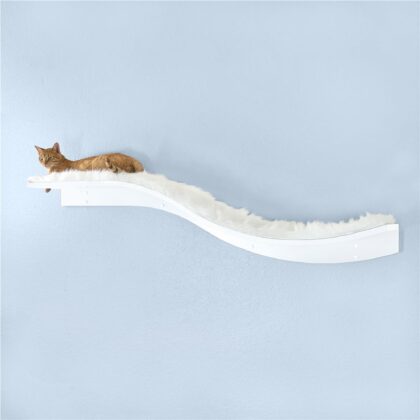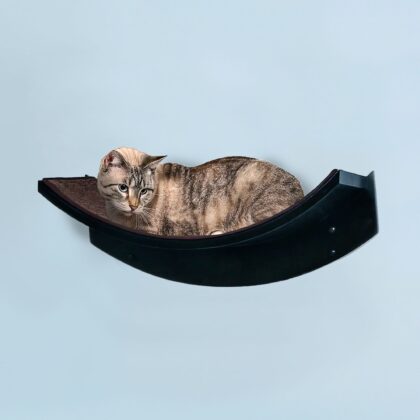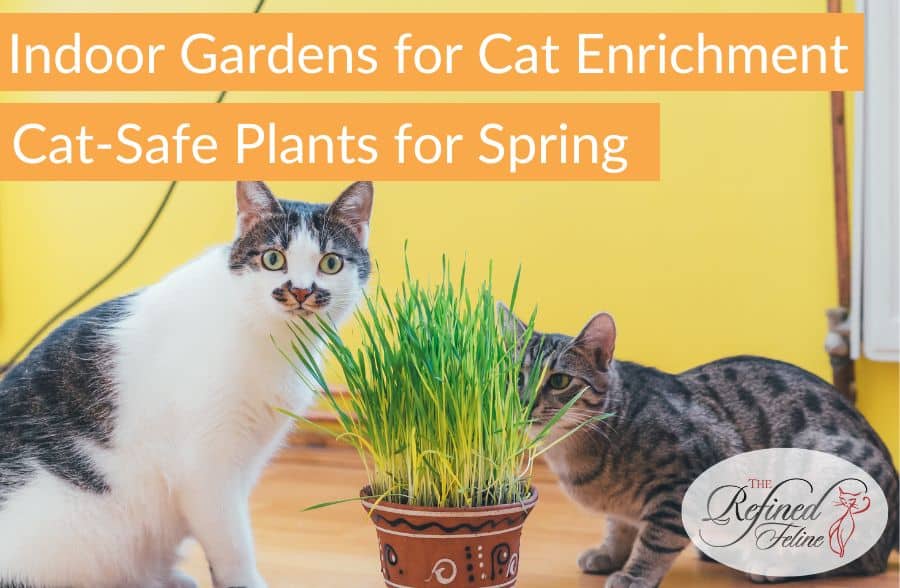
Indoor Gardens for Cat Enrichment: Cat-Safe Plants for Spring
As spring arrives with its promise of renewal and growth, many of us feel inspired to bring some greenery into our homes. For cat owners, however, this natural impulse comes with an important caveat: many common houseplants can be toxic to our feline companions. At The Refined Feline, we believe your home should be both beautiful and safe for every member of your family—including those with four paws and whiskers.
Creating an indoor garden that enriches your cat’s environment while keeping them safe requires careful plant selection and thoughtful placement. This guide will help you cultivate a spring indoor garden that satisfies both your green thumb and your cat’s natural curiosity.
Why Indoor Plants Matter for Cats
Before diving into plant selections, it’s worth understanding why an indoor garden can be beneficial for your feline friend:
“Cats are natural foragers and explorers,” explains veterinary behaviorist Dr. Elizabeth Bales. “Access to safe plants allows them to express these instincts in a controlled environment.”
Indoor plants provide:
- Natural enrichment through different textures and scents
- Safe nibbling opportunities (for designated cat-friendly plants)
- Air purification benefits shared by both human and feline residents
- Humidity regulation, which can be especially helpful for cats with respiratory sensitivities
Toxic vs. Safe: Understanding the Difference
Before introducing any plant into your home, it’s crucial to understand which ones pose dangers to your cat.
Common toxic plants to avoid:
- Lilies (all varieties, including Easter lilies, which are extremely toxic)
- Philodendron
- Pothos
- Monstera
- Dieffenbachia
- Sago Palm
- Tulips and daffodils
- Azaleas and rhododendrons
Signs of plant poisoning in cats:
- Vomiting or diarrhea
- Excessive drooling
- Difficulty swallowing
- Pawing at the mouth
- Lethargy or weakness
- Changes in urine output
If you suspect your cat has ingested a toxic plant, contact your veterinarian or the ASPCA Animal Poison Control Center (1-888-426-4435) immediately.
Related: 9 Foods To Keep Away From Your Cats
Cat-Safe Plants for Your Spring Indoor Garden
Fortunately, many beautiful plants are completely safe for cats, allowing you to create an indoor garden that’s both aesthetically pleasing and pet-friendly.
1. Cat Grass (Dactylis glomerata)
Cat grass isn’t just safe—it’s beneficial for cats. This quick-growing grass aids digestion and provides a safe outlet for your cat’s natural grazing instincts.
Growing tips:
- Sow seeds in shallow trays with potting soil
- Keep soil consistently moist until germination
- Place in bright, indirect light
- Reseed every 2-3 weeks for a continuous supply
Cat grass kits from brands like Pet Greens are readily available on Amazon, making it easy to start growing this feline favorite.
2. Catnip (Nepeta cataria)
The ultimate cat-friendly herb, catnip contains nepetalactone, a compound that triggers a euphoric response in many cats.
Growing tips:
- Plant in well-draining soil
- Provide at least 6 hours of sunlight daily
- Allow soil to dry between waterings
- Harvest leaves once plant reaches 8 inches in height
The Refined Feline recommends placing potted catnip near one of their elegant cat trees to create an enrichment zone your cat will adore.
3. Spider Plant (Chlorophytum comosum)
With its arching variegated leaves and air-purifying properties, the spider plant is both decorative and completely non-toxic to cats.
Growing tips:
- Thrives in bright, indirect light
- Allow soil to dry slightly between waterings
- Plant in well-draining potting mix
- Hanging planters can help keep these plants out of reach if your cat tends to over-nibble
4. Boston Fern (Nephrolepis exaltata)
These lush, feathery ferns add a touch of woodland charm to any space while being perfectly safe for curious cats.
Growing tips:
- Prefers indirect light and high humidity
- Keep soil consistently moist
- Mist regularly during dry winter months
- Feed with diluted houseplant fertilizer monthly during growing season
Consider placing a Boston fern near The Refined Feline’s window perches to create a jungle-like viewing spot for your cat.
5. African Violet (Saintpaulia)
For a splash of color, African violets offer beautiful blooms year-round and pose no threat to cats.
Growing tips:
- Thrives in bright, indirect light
- Water from the bottom to avoid leaf spotting
- Keep soil lightly moist
- Use African violet-specific potting mix
6. Areca Palm (Dypsis lutescens)
This elegant palm provides a tropical feel and is one of the most effective air-purifying plants while remaining completely cat-safe.
Growing tips:
- Prefers bright, indirect light
- Allow top inch of soil to dry between waterings
- Maintain high humidity through misting
- Fertilize lightly during spring and summer
The substantial Areca Palm available on Amazon can create a striking display alongside The Refined Feline’s modern cat furniture.
Creating a Cat-Friendly Plant Display
Strategic placement is key to maintaining both your plants’ health and your cat’s safety.
Elevation options:
- Wall-mounted planters keep plants visible but out of reach
- Hanging macramé plant holders add bohemian charm while deterring determined cats
- Dedicated plant shelves with limited access for cats
Interactive arrangements:
- Create a “cat garden” area with cat grass and catnip in sturdy containers
- Place these in a sunny window alongside one of The Refined Feline’s window perches
Protection strategies:
- Surround the base of larger floor plants with decorative rocks too large for cats to dig up
- Use natural deterrents like citrus peels or coffee grounds in soil (most cats dislike these scents)
- Consider plant stands with built-in cat deterrents available on Amazon
DIY Cat-Safe Plant Projects for Spring
Engage your creative side with these simple DIY projects that benefit both you and your cat:
1. Window Herb Garden
Create a dual-purpose herb garden with separate sections for human herbs and cat herbs:
- Cat section: Cat grass, catnip, valerian
- Human section: Basil, mint, rosemary (all cat-safe but less appealing to felines)
2. Terrarium for Exploration
Build a covered terrarium with small cat-safe plants:
- Use a glass container with a wide opening
- Include pet-safe soil and activated charcoal for drainage
- Plant mini spider plants, air plants, or baby’s tears
- Add smooth stones or wood pieces for decoration
3. Cat Grass Rotation System
Create a three-pot rotation system:
- Week 1: Plant seeds in pot one
- Week 2: Plant seeds in pot two as pot one matures
- Week 3: Plant seeds in pot three as pot two matures
- Week 4: Replant pot one after cats have enjoyed/demolished the mature grass
Monitoring Plant and Cat Interactions
Even with safe plants, it’s important to observe how your cat interacts with your indoor garden:
- Some cats may develop digestive upset from overconsumption of even safe plants
- Individual cats may have unique sensitivities
- Soil digging can become problematic for some enthusiastic felines
The Refined Feline recommends starting with one or two cat-safe plants and monitoring interactions before expanding your indoor garden.
Seasonal Plant Care and Cat Considerations
As spring progresses into summer, both your plants and cat will experience changes:
Adjusting to seasonal shifts:
- Gradually move plants away from intensifying direct sunlight
- Monitor soil moisture as heating systems shut down and humidity levels change
- Watch for increased plant growth that might make previously inaccessible plants reachable
Conclusion
Creating a cat-friendly indoor garden this spring doesn’t mean sacrificing style or your plant parent aspirations. With thoughtful selection and placement, you can cultivate a space that enhances your home’s beauty while providing safe enrichment for your feline companion.
The Refined Feline’s elegant cat furniture can complement your indoor garden design, creating a harmonious environment where both plants and cats can thrive. By integrating cat-safe greenery with dedicated cat spaces, you’ll create a spring refresh that benefits every member of your household.
Remember that each cat is an individual with unique preferences and behaviors. Pay attention to how your cat interacts with new plants, and don’t hesitate to make adjustments to ensure both your garden and your feline friend remain healthy and happy throughout the season.


